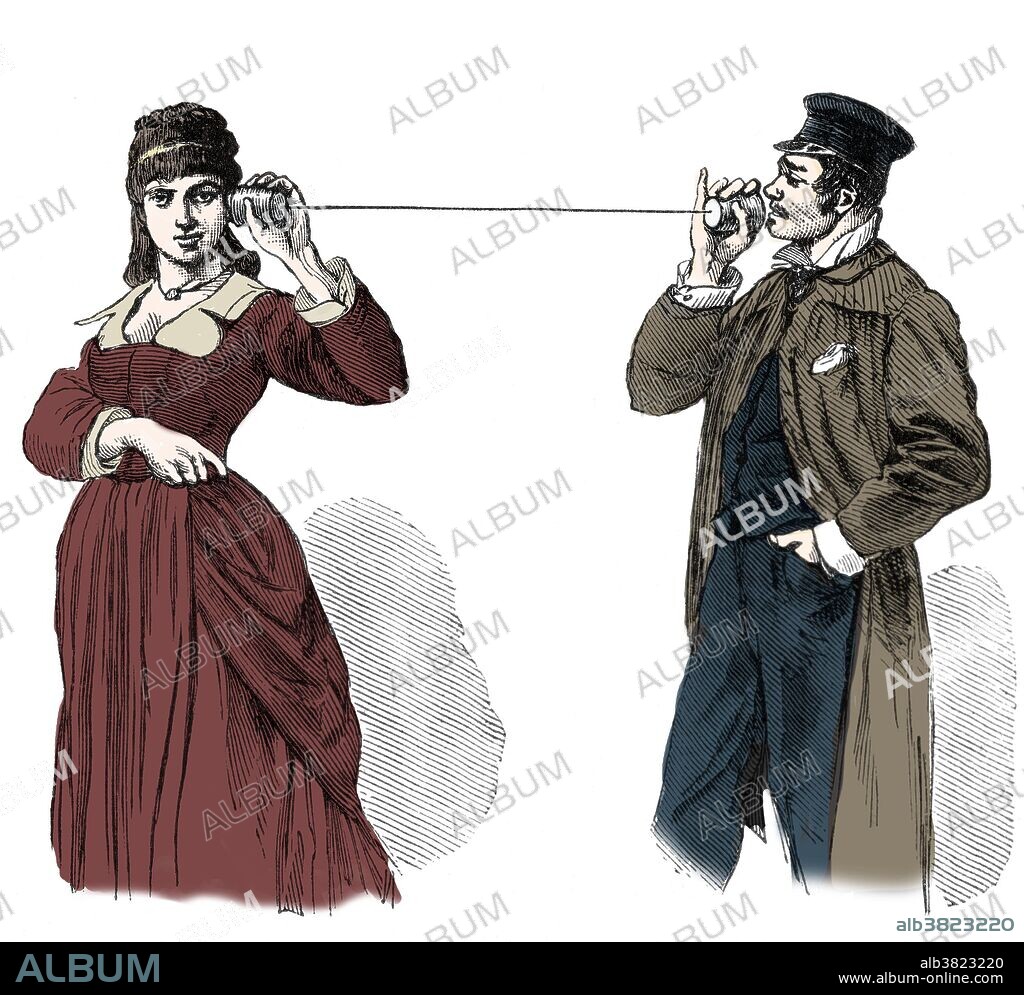alb3823220
Tin Can Telephone, 19th Century

|
Zu einem anderen Lightbox hinzufügen |
|
Zu einem anderen Lightbox hinzufügen |



Haben Sie bereits ein Konto? Anmelden
Sie haben kein Konto? Registrieren
Dieses Bild kaufen

Titel:
Tin Can Telephone, 19th Century
Untertitel:
Siehe automatische Übersetzung
A tin can telephone is a type of acoustic (non-electrical) speech-transmitting device made up of two tin cans, paper cups or similarly shaped items attached to either end of a taut string or wire. It is a form of mechanical telephony, where sound is converted into and then conveyed by vibrations along a liquid or solid medium, and then reconverted back to sound. The classic example is the children's toy made by connecting the bottoms of two paper cups, metal cans, or plastic bottles with tautly held string. In the centuries before tin cans and paper cups became commonplace, other cups were used and the device was sometimes called the "lovers' telephone". During the 20th century, it came into common use in preschools and elementary schools to teach children about sound vibration. This image has been color enhanced.
Bildnachweis:
Album / Science Source
Freigaben (Releases):
Model: Nein - Eigentum: Nein
Rechtefragen?
Rechtefragen?
Bildgröße:
3900 x 3588 px | 40.0 MB
Druckgröße:
33.0 x 30.4 cm | 13.0 x 12.0 in (300 dpi)
Schlüsselwörter:
BERÜHMT • BERÜHMTE PERSÖNLICHKEIT • ILLUSTRATION • ILLUSTRATIONS • KARTE • KOMMUNIKATION • LIEBE • MANN • NOTABEL • PAPPE • PROMINENZ • SENTIMENTALITAET • SENTIMENTALITÄT • STIMMUNG: LIEBE • TECHNOLOGIE • VALENTINSTAG • ZUNEIGUNG
 Pinterest
Pinterest Twitter
Twitter Facebook
Facebook Link kopieren
Link kopieren Email
Email
